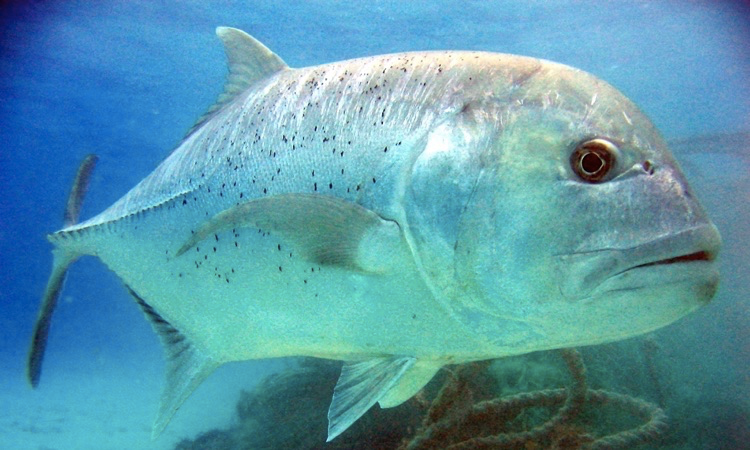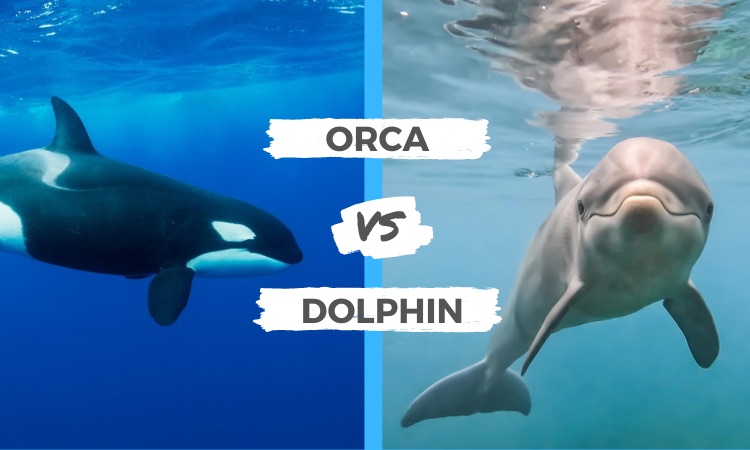Many fishermen constantly compare their “catch of the day” against others in similar categories. For example, they may ask themselves if red snapper is better than white snapper. Or whether yellowfin is better than bluefin tuna. The same can be said for Halibut vs flounder.
Of course, these answers are always extremely personal since everyone has their own distinct style. However, when it comes to flounder vs halibut, the debate becomes much more interesting for one simple reason.
A halibut is a flounder, but not all flounder are halibut. Stick around! Let’s have a brief look at this topic to see what distinctions and similarities exist.
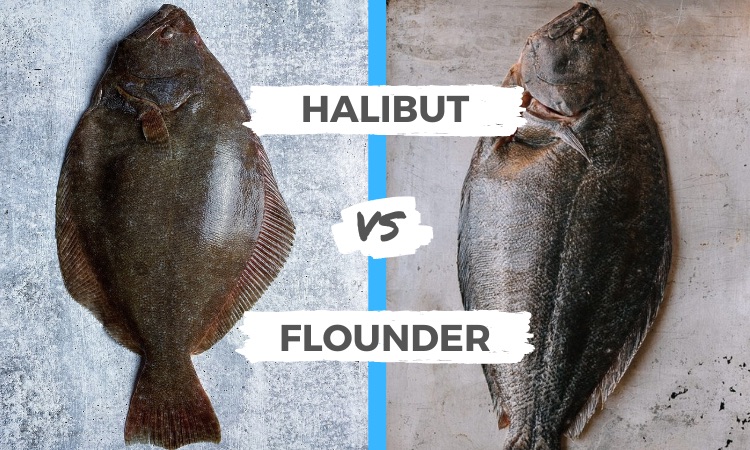
Halibut vs Flounder Overview
Before anything else, let’s get one thing clear: halibut and flounder are two of the tastiest fish in the sea. The name halibut dates back to Middle English where it was originally called “halybutte” which translates to “holy flatfish.”
This is because during Catholic holy days there is a belief that eating meat is forbidden. Halibut has quickly become a delicious alternative for people during these times.
These fish are technically classified as flatfish, and they live at the bottom of lakes and oceans in an area called the demersal zone. They’re predators that mostly eat other fish, but they’ll also consume any sea animal or crustacean small enough to fit inside their mouths.
Their teeth are shaped like cones, which come in handy for devouring their prey. They’ve even been known to cannibalize members of their own species on occasion.
When it comes to these rather ugly fish, there are four main differences between a Halibut and a Flounder:
- Size
- Body shape
- Shape of the tail
- Positioning of the eyes
By understanding the main differences between a flounder vs halibut, you will be able to easily identify which one is which.
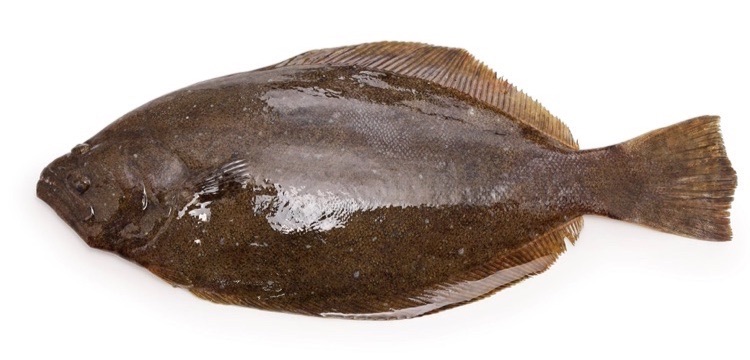
The Difference Between Halibut vs Flounder
Before we get into the primary distinctions, you should be aware that just the Pacific and Atlantic halibut are the only real halibut out here.
Some of these animals can reach a weight of 400 pounds. Flounder, in contrast, don’t get nearly as large. Some of the biggest ever recorded were just over 30 pounds. Other than the aforementioned similarities, these are the primary differences between halibut and flounder fish:
Size
The sheer size of the fish is one of the most dependable signs as to which species you caught. You will almost certainly have a huge fish if you have a Pacific or Atlantic halibut on your hook.
These fish can reach 400 pounds in adulthood and have a lot of meat on their bones. Flounder, on the other hand, do not grow as big as sea bass and sole. In fact, the average flounder catch is between 5 and 30 pounds.
The more you hang around fishing circles, the more likely you are to hear halibut being referred to as either a “barn door” or a “doormat.” This is mostly because they are so flat and thus create such an opportunity for grilling.
Body Shape
The body of a halibut is longer and more diamond-shaped than that of a flounder, with pointed anal and dorsal fins. This differs drastically from the shape of a flounder’s body, which is rounder rather than diamond-shaped.
Another distinction is that flounder fish have uniform smaller fins, which adds to the rounded body shape’s emphasis.
Shape of the Tail
Another significant distinction between these fish is the tail structure. Halibut have a more forked tail that, on occasion, comes to a point at each end of the tail. Flounder, on the other hand, has no such features. Their tails are generally more rounded (although they can sometimes be bulbous).
Positioning of the Eyes
The most unusual feature of flatfish, like flounder and halibut, is that they have both eyes on one side of their bodies.
As they grow, one eye gradually moves to one side of the head, so both eyes end up on the same side. With halibut, however, this is not the case; their eyes will always be on opposite sides of the head, with right-eyedness being much more common than left-eyedness.
Flounders are a relatively rare type of fish. In fact, only 1 in every 20,000 or so flounders will be left-eyed. Most flounders eyes will always be on one side of the head, but you can find some that have right-sighted and left-sighted eyes.
Where is the Best Place to Find Halibut and Flounder?
Many seasoned anglers will tell you that, compared to other flounder species, Pacific halibut are more often located in northern waters. So, if you’re looking to catch one of these fish, try fishing near the western coast of Alaska or down into the northwestern U.S.
The best places to locate halibut are in Homer and Seward Kenai in Alaska, or the southern waters off of Central California. You might also find them near Vancouver Island or Juneau. Even though the California halibut isn’t technically classified as a real halibut, it is still a close relative to its Northern cousins.
If you’re looking for Atlantic halibut, however, you should search the waters around Cape Cod. They can also be found in the seas around Northern Europe and Greenland. Although Atlantic halibut are on the endangered species list, they are not a very popular target for fishermen.
Flounder range all over the world, from the Gulf of Maine to the Gulf of Mexico. They may be found practically everywhere along the Pacific Coast from California to Baja Mexico.
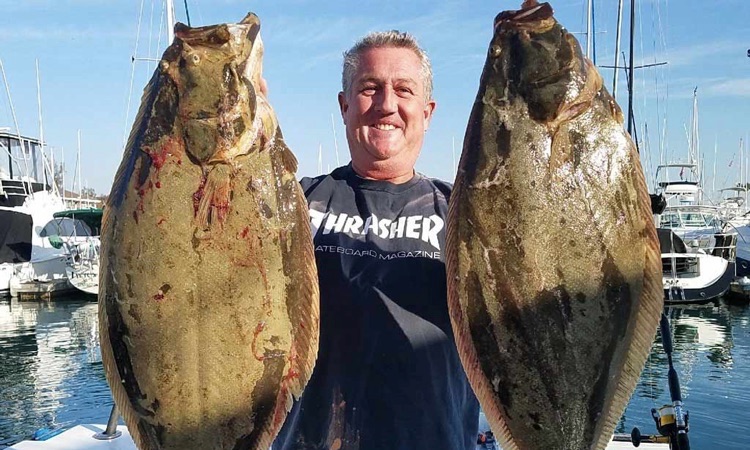
Is There a Difference in Taste Between Flounder and Halibut?
If you’re reading this guide, it’s probably because you want to know the difference between halibut and flounder. Now that you know where to find them and how they differ, your next logical question might be which one tastes better. That way, you’ll know which fish to go for next time you head out sea.
Although halibut and flounder are closely related and have similar flavors, there are some key differences. Halibut is more robust with a firmer texture whereas flounder is delicate and flakes easily. Additionally, halibut has less fat than other comparable fish. In fact, they’re some of the leanest you can find at the market.
Not to mention, the meat is firm and will hold up well on the grill. All of these qualities make this fish a great choice for grilling.
In contrast, flounder is significantly fattier and it doesn’t have the thickest fillets. Since these slices are thinner, the best methods to cook flounder include frying or baking it. And as with all seafood, remember to buy fresh fish whenever possible.
If you’re confident it’s fresh, and if you caught it yourself, go for halibut. Meatier and less fatty than salmon. It also grills nicely. However, on the East Coast, you might want to stick with flounder since flying in from Alaska ensures that the fish is more likely to be fresh.
The Advantages of Eating Halibut and Flounder
Halibut and flounder are both considered “superfoods” because, like many other types of fish, they provide a lot of minerals and health advantages when consumed.
This is due to the fact that each time you eat them, they provide you with an outstanding amount of nutrients and health benefits. Let’s take a look at some of the health advantages of eating halibut or flounder as often as possible.
Rich in Micronutrients
There are nutrients that, although our body requires, it does not require in high quantities to survive. This isn’t to imply that these elements are critical. Selenium is a micronutrient that, in addition to assisting with reproductive health, also has a significant role in promoting overall health.
The Selenium levels in 160 grams of halibut are enough to give your body what it needs. Halibut is also rich in other micronutrients:
- Phosphorus
- Vitamin B12
- Vitamin B6
- Magnesium
High-Quality Protein
One serving of halibut contains 42 grams of complete protein. Amino acids are vital to your body’s functioning, but it cannot produce them on its own.
It’s an excellent way to improve your health and nutrition, as well as assisting with your metabolic processes. Halibut is high in protein and therefore helpful for extremely physically active people such as athletes since it aids in the rebuilding of muscles and the repair of tissues.
It’s Good for Your Heart Health
One of the leading medical problems and causes of death for both women and men is heart disease, but there are ways to help reduce your risk. One way is by eating more fish like halibut or flounder.
Micronutrients like niacin, Omega-3 fatty acids, magnesium, and selenium found in halibut work together to improve heart health. For example, they boost levels of good cholesterol while reducing triglycerides. In addition, these micronutrients can help lower blood pressure and reduce the formation of blood clots.
There are several more health advantages to eating flatfish, including:
- Help with digestion
- Boost brain health
- Increase the health of your liver
- Reduce your risk of breast cancer
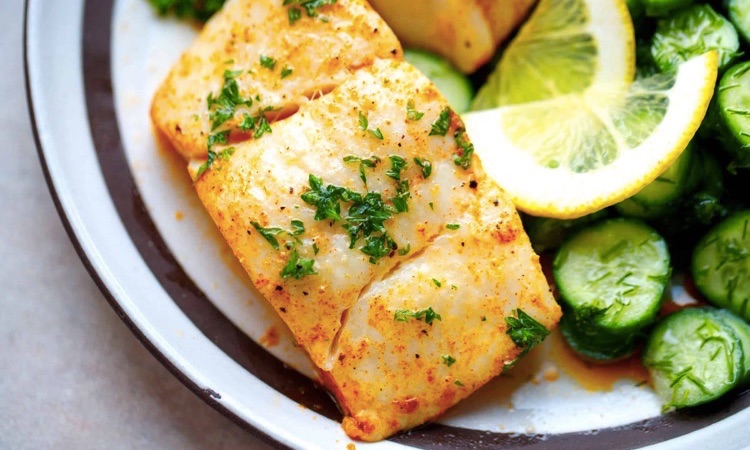
How to Catch Halibut and Flounder
If you’re set on trying to catch either halibut or flounder, here are some fishing tips that will improve your chances of success
You Can Catch Halibut Surf Fishing
While catching halibut on a charter trip or aboard a fishing boat is the normal approach, there are several alternatives. You can actually catch Halibut surf fishing. Some fishermen would say that this is without a doubt one of the most pleasant and effective methods to do so.
To hook a halibut, you’ll need the following equipment:
- A circle hook for the bait. J-hooks aren’t ideal to catch halibut because they generally bite slowly, which can make it tough get a decent hookset right away. Circle hooks are the perfect solution to that problem.
- You will need a lead weight when fishing for halibut, as they are bottom feeders. By adding a lead weight to your hook and bait, you will be more likely to attract their attention.
- As mentioned, halibut will eat almost anything in their environment. Therefore, one of the best ways to bait them is by using fresh shrimp.
The only thing left to do after you’ve gathered your gear is find where the fish are biting. This includes, jetties, riverbed entrances, estuaries and open beaches.
You can catch halibut and flounder all year if you surf fish in warmer seas, despite the fact that commercially agreed months for catching halibut are from mid-May through mid-September.
Anglers frequently prefer larger and more grandiose catches, making halibut the better choice in halibut vs flounder.

